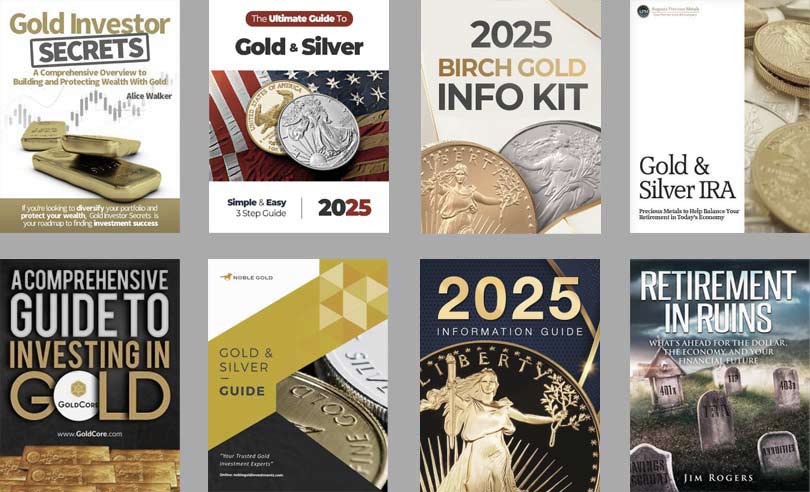One of Donald Trump’s big campaign promises had to do with bringing back manufacturing jobs to the U.S
 Bullion.Directory precious metals analysis 11 April, 2024
Bullion.Directory precious metals analysis 11 April, 2024
By Peter Reagan
Financial Market Strategist at Birch Gold Group
Imagine a Detroit that has a thriving manufacturing industry and a shrinking portion of the population in poverty as opposed to the bombed out looking images that you see coming out of industrial area Detroit right now.
Turning the current situation around is the dream, the goal, and Trump, like many Presidents before him, has absolutely no problem using the power of government to drive his policy positions.
Specifically, the lever that he is using the most for that is tariffs.
And is he ever using them! Ben Berkowitz with Axios writes,
President Trump paused the sweeping reciprocal tariffs the U.S. imposed this week, saying dozens of countries had reached out to negotiate new trade deals.
Why it matters: It’s the relief global markets, U.S. allies and many Trump advisers wanted, as fears of a global crisis mounted. But Trump didn’t back off fully, keeping 10% baseline tariffs in place while increasing tariffs on China to 145%.
Yes, Trump paused most of the tariffs, but he actually increased the tariffs on Chinese goods which is where a massive portion of U.S. manufacturing jobs have gone over the years.
And Trump hasn’t said that he has permanently decided to not place tariffs on other countries. Their tariffs are only on pause.
In other words, tariffs are a bargaining chip, and a powerful one at that, to drive what he considers to be fairer (and, ideally, fair) trade agreements with the rest of the world.
But will tariffs work?
In the longer term, yes, it looks like they will work and that they are already working.
Other countries are renegotiating trade agreements with the U.S. already, and many major companies are working to bring their manufacturing back to the U.S. in order to avoid those tariffs.
Just within the last few weeks, according to Nick Mordowanec with Newsweek, we’ve seen announcements indicating that Johnson & Johnson, SoftBank, Taiwan Semiconductor Manufacturing Company (TSMC), OpenAI, Oracle, and Apple are making big investments in U.S. manufacturing and infrastructure.
In fact, if you include the investments from the United Arab Emirates, the investments just from that country and those companies add up to $3.22 trillion in promised investments into U.S. manufacturing and infrastructure. This is great news!
And don’t forget to include “that chipmaker Nvidia would invest hundreds of billions of dollars over the next four years in U.S.-based manufacturing operations.” We don’t know that exact number, but for all we know, that could push the investment amount to over $4 trillion.
That’s nothing to sneeze at. It would be the equivalent of over one-third of the federal government’s 2025 budget.
And all that was even before Liberation Day! Merely the threat of tariffs coaxed a number of nations into multi-trillion-dollar commitments in the renaissance of American manufacturing.
So, yes, Trump’s plan to make America an industrial powerhouse seems to be working. So far so good, right?
But how far have we really come?
It’s a mistake to expect these changes to be fast or easy
There are a few factors in play here that people looking for microwave results for a huge economic turnaround simply aren’t paying attention to.
First, according to Open Cost USA, when you take into consideration the costs for buying the land, site preparation, construction, permits and licenses (because the government wants its pound of flesh, right?), and architecture and engineering fees, it can realistically cost much more than you might think.
How much? Depends on the location, the industry – but the price just to break ground works out to somewhere between $1 million to $10 billion. Per factory.
Then, when you factor in what accountants call “capital expenditures” – machinery, tooling and heavy equipment, computer systems, warehousing and storage, HVAC, along with installation and setup, you’re looking at an additional 10-50%.
As you’d expect, the more advanced and complex the finished product, the more expensive and elaborate the factory. It’s much cheaper to set up a textile facility cranking out t-shirts than a semiconductor manufacturing facility with its numerous clean rooms for deposition, vapor coating, lithography, etching and ionization. Semiconductor manufacturing starts at about $100 million for a single, smaller-scale operation!
And that’s not even including the costs of actually running the plant.
In other words, it’s not cheap.
In fact, the U.S. is one of the most expensive places to manufacture things. Partially because the U.S. also has a higher standard of living than most other places – meaning American workers need higher wage (which is why so many companies offshored their manufacturing in the first place).
And let’s not get started on how long it takes to build a plant in the U.S. compared to other countries. Anton Shilov with Tom’s Hardware writes,
Taiwan completes fabs in around 19 months, followed by Singapore and Malaysia at 23 months. European projects take 34 months, while the U.S. is the slowest at 38 months. A key reason for this is Taiwan’s streamlined permit process and round-the-clock construction, whereas the U.S. and Europe face delays in approvals and do not construct 24/7.
Twice as long to build a plant here as in Taiwan.
No wonder Taiwan has been enjoying a virtual manufacturing monopoly on elaborate and expensive semiconductors! The nation simply makes it easier and much faster for companies to go from decision to making money.
Twice as fast!
And those aren’t the only challenges
In fact, there are other obstacles to bringing back manufacturing in a big way to the U.S. Again from Ben Berkowitz who tells us:
To make a manufacturing renaissance happen in America, President Trump needs three things to happen simultaneously:
1. The private sector needs to commit capital, in size and with confidence, to support a national campaign to build factories, ships and the like.
2. There needs to be a willing labor force for that construction — either American workers agreeing to take lower-wage construction jobs, or a reversal of the immigration crackdown that’s straining the labor market.
3. All of the above needs to happen, nationally and in real time, without runaway inflation, as everyone seeks the same steel, lumber, workers, etc.
We’re already seeing the first part happening (see Apple, etc. above).
The second one could be a challenge. Fortunately, that’s what free markets are for! When there aren’t enough workers willing to take “lower-wage construction jobs” then wages rise until workers become willing. Take it from somebody who once, long ago, spent a backbreaking year on a construction team in the middle of nowhere – if you offer the right wage, workers will line up!
The third point, specifically keeping prices in check… (Note I’m correcting his misuse of the term “inflation” in this context. Increased demand for steel, lumber, workers etc. will make prices go up, but that’s not the same as inflation.) It’s hard to say how that will unfold – free markets again. When demand for lumber and steel rise, prices rise, too. Higher prices incentivize more production, which brings prices down again. Those price changes can be uncomfortable but it’s nothing we haven’t been through before. Oil prices, for example, change all the time and we barely notice.
Tariffs will cause prices to rise. And a manufacturing boom would also cause prices to rise (at first). That’s why I keep calling this plan short-term pain for long-term gain. These facts will make this plan difficult, we’ll need to adjust as the plan proceeds. But it’s not impossible.
The outlook is actually pretty good! Just not for a while
Manufacturing can return to the U.S. Our nation’s economy could become stronger, more robust and more diverse. We could become independent of China and other rivals who’ve demonstrated a vested interest in keeping the U.S. dependent on their raw materials and industrial infrastructure.
All of that is good news.
It just won’t be quick. Or easy. Or painless.
But it can certainly happen, and right now it’s looking like it will happen.
As a side effect, and I don’t mean to minimize it – it’s a huge side effect – the entire global supply chain will change. Stable industries may vanish overnight while new industries are starting up here in the U.S. We don’t exactly know what will change, or how.
That’s why investors all around the world have been reacting (and overreacting) to this week’s news and developments. Nobody knows how this economic situation is going to pan out in the short-to-medium term. Uncertainty is the only certainty right now.
And in times of uncertainty, what happens? Safe-haven gold becomes a must-have asset. (It’s no coincidence the price of gold hit an all-time high today.)
Right now, around the world, everyday people are making absolutely certain their own financial foundations are solid. Remember, gold’s price moves independently of how the economy overall is doing. This may seem mysterious, but it’s really not – in good times, people buy gold as a luxury. In bad times, they buy gold as a safe haven. Learn more about the benefits of physical gold ownership.
So if you want to ensure your own personal finances are resting on the firmest possible foundation – no matter what happens next – I strongly recommend you learn more about diversifying your savings with physical precious metals.
Peter Reagan

Peter Reagan is a financial market strategist at Birch Gold Group, one of America’s leading precious metals dealers, specializing in providing gold IRAs and retirement-focused precious metals portfolios.
Peter’s in-depth analysis and commentary is published across major investment portals, news channels, popular US conservative websites and most frequently on Birch Gold Group’s own website.
This article was originally published here











 Material provided on the Bullion.Directory website is strictly for informational purposes only. The content is developed from sources believed to be providing accurate information. No information on this website is intended as investment, tax or legal advice and must not be relied upon as such. Please consult legal or tax professionals for specific information regarding your individual situation. Precious metals carry risk and investors requiring advice should always consult a properly qualified advisor. Bullion.Directory, it's staff or affiliates do not accept any liability for loss, damages, or loss of profit resulting from readers investment decisions.
Material provided on the Bullion.Directory website is strictly for informational purposes only. The content is developed from sources believed to be providing accurate information. No information on this website is intended as investment, tax or legal advice and must not be relied upon as such. Please consult legal or tax professionals for specific information regarding your individual situation. Precious metals carry risk and investors requiring advice should always consult a properly qualified advisor. Bullion.Directory, it's staff or affiliates do not accept any liability for loss, damages, or loss of profit resulting from readers investment decisions.

Leave a Reply